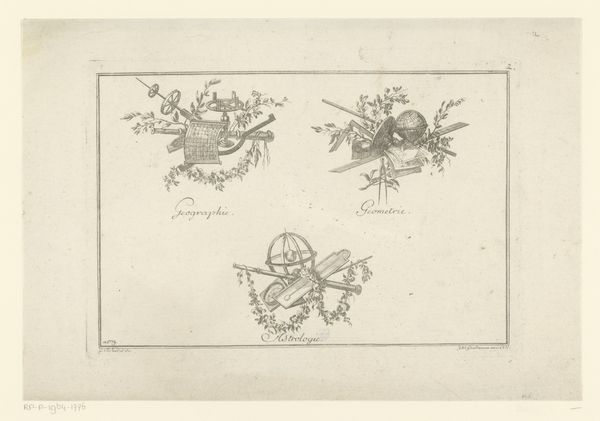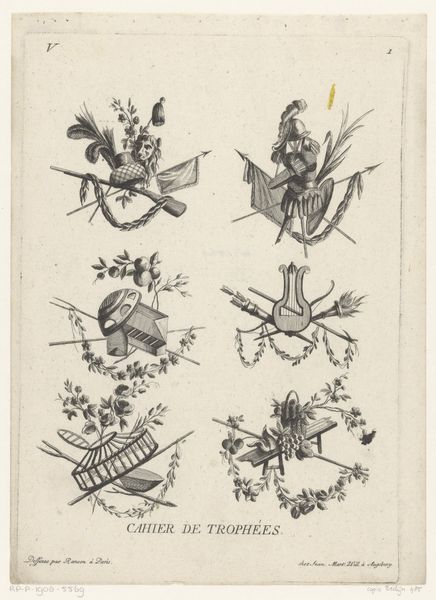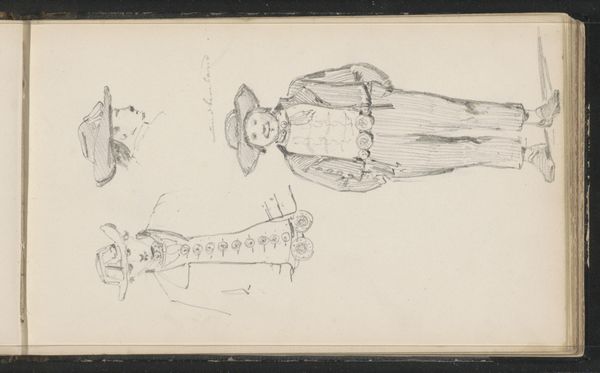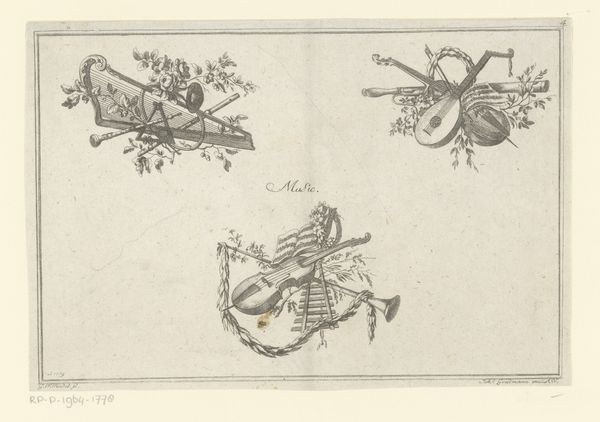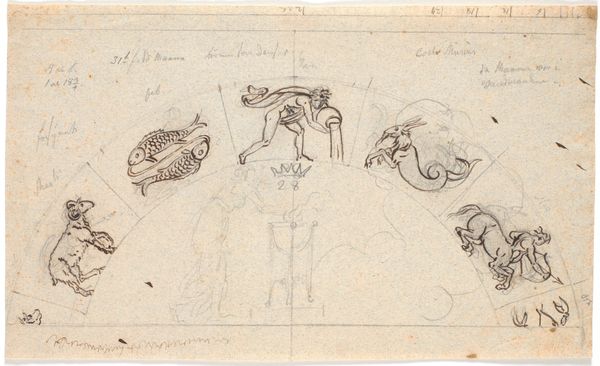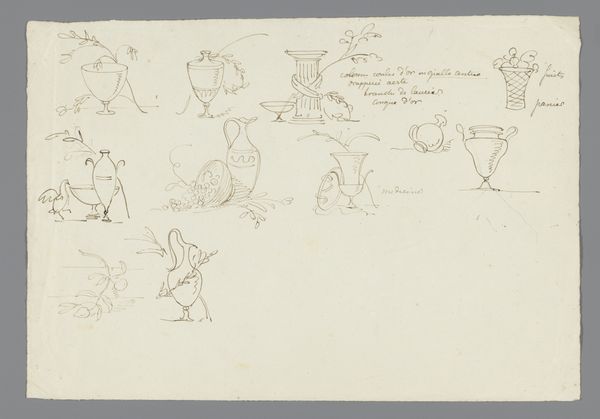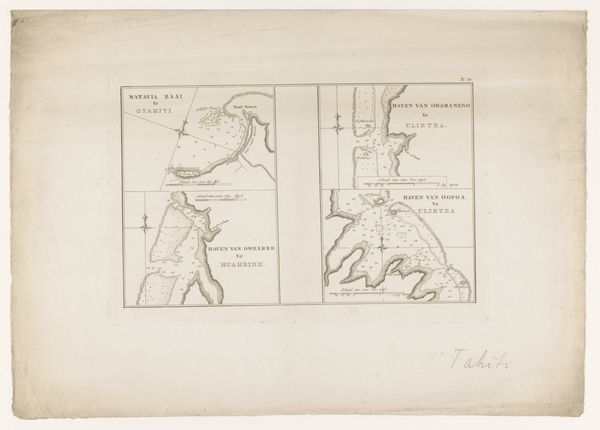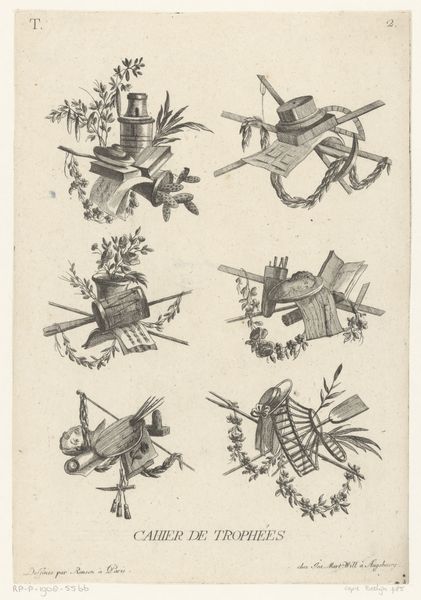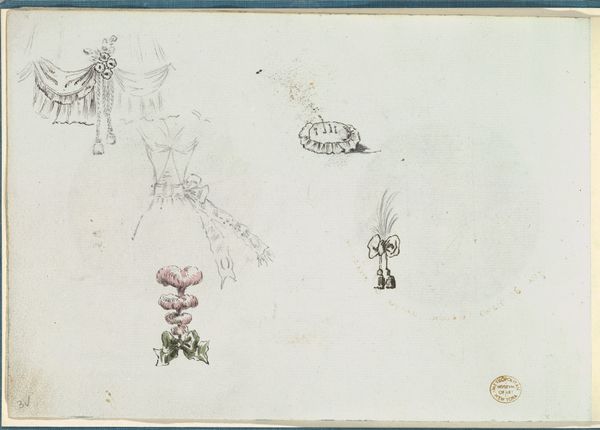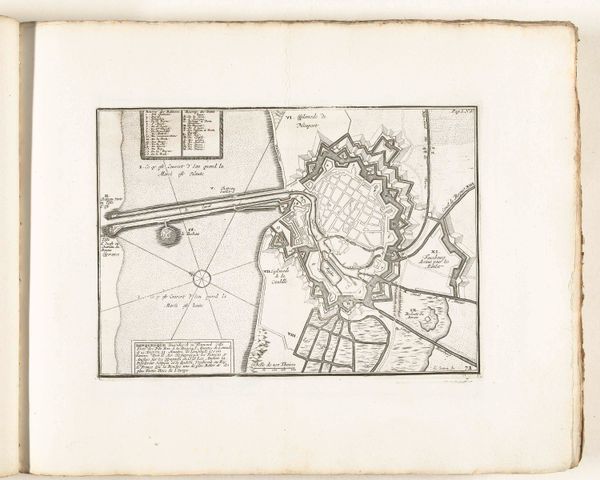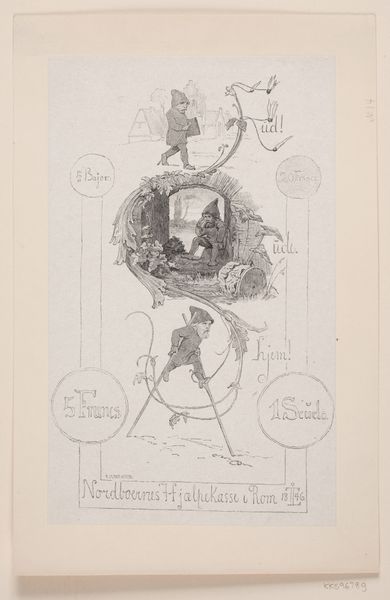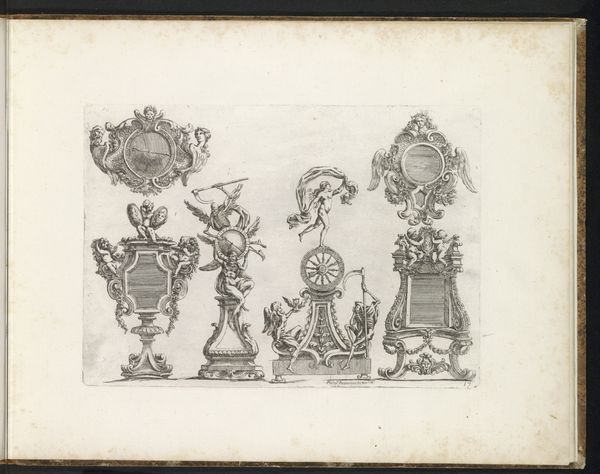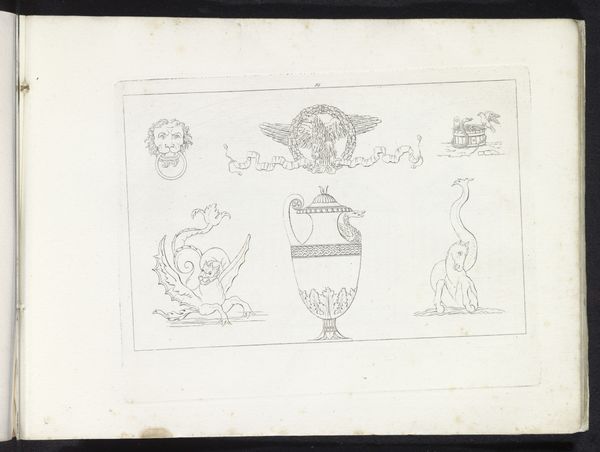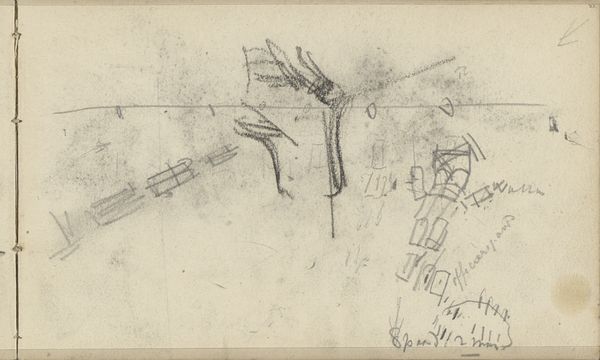
The Great Exhibition "Wot is to Be", Probable Results of The Industry of All Nations in The Year '51, Showing What is to be Exhibited, Who is To Exhibit, in Short How Its All Going to Be Done 1850
0:00
0:00
drawing, print
#
drawing
# print
#
caricature
#
genre-painting
#
history-painting
Dimensions: sheet: 5 1/16 x 9 5/16 in. (12.8 x 23.7 cm)
Copyright: Public Domain
Curator: Here we have a lithograph, brimming with visual wit, created by George Augustus Sala in 1850. The title, quite a mouthful, is "The Great Exhibition 'Wot is to Be', Probable Results of The Industry of All Nations in The Year '51, Showing What is to be Exhibited, Who is To Exhibit, in Short How Its All Going to Be Done." It resides here at The Met. Editor: My initial impression is that it looks like a collection of cleverly rendered absurdities. There’s a light, satirical quality, despite the somewhat detailed drawing style. The figures and contraptions are simultaneously funny and strangely disturbing. Curator: Indeed. Sala uses caricature to critique and forecast the impact of the Great Exhibition, focusing on industrial progress. Note the rigid lines, precise detail rendered via crosshatching: He mimics technical drawings to subvert them. Each "invention" is meticulously illustrated yet utterly preposterous. Editor: Precisely! Look at this…‘Patent sheep Tailoring Machine.’ It epitomizes the fear of automation, rendered as something almost medieval. The symbol of the woman entering and the rich Sour Teilor coming out embodies a deeper class struggle, of craftsmanship devalued by industrial efficiency, or in other terms a societal transfiguration by industrial development. Curator: And what about the so-called 'Genius of Hardware'? The symbolism feels quite potent here, doesn’t it? It’s like a deity presiding over industrial manufacture, wielding sharp points with threatening undertones. Editor: Exactly! We see industrial expansion as the New Divinity here! But if you carefully view "The Procession of Brummagere Buttons," it's clearly a statement on standardization and dehumanization, the tiny workers and their monotonous labour. It's quite the sharp critique masked in humor, very much of its era and, I think, enduringly relevant today. Curator: I concur, its resonance comes from the inherent anxiety linked to technological advancement. Editor: The artist successfully interweaves fear and humor, highlighting both the promise and peril of the age. I am grateful to see what history could not anticipate from technology at that moment. Curator: A complex reflection presented as a series of deceptively simple vignettes. This shows us an artist very keyed into social conditions of their day.
Comments
No comments
Be the first to comment and join the conversation on the ultimate creative platform.
